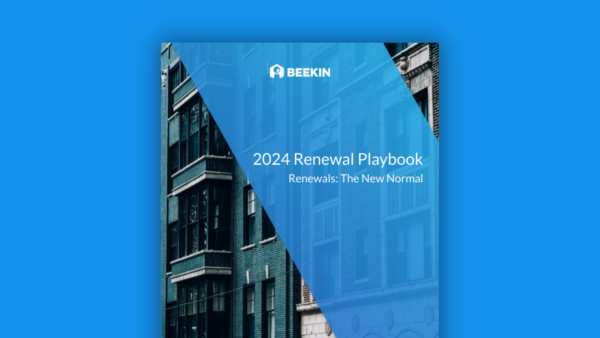Benjamin S. Butcher is the Chairman and CEO of STAG Industrial Inc. (NYSE: STAG). STAG owns 92 million sq.ft of industrial real estate across 38 states. Ben has spent nearly 30 years in real estate and finance. Prior to founding the predecessors of STAG, Ben worked at Credit Suisse and Nomura.
Ben holds a B.A from Bowdoin College and an M.B.A. from the Tuck School of Business at Dartmouth.
Beekin
Hi Ben, as a way of getting started, why don’t you tell us what you’ve been up to the past couple of months through the pandemic and the work from home environment?
Ben
Thanks. At the onset of the pandemic, we were fortunate that we’d put Microsoft Teams in place last fall – so we transitioned relatively seamlessly into a virtual work or work-from-home environment. We also recognized that there are a few too many unknowns to continue to pursue acquisitions, which is a big part of our business.
So we put a pause on acquisitions as we tried to determine what was happening to the inputs, what was going to happen to interest rates, rental rates, tenant credit default, etc. There was a pause from, say, March 15th to late May in terms of acquisitions.
At the same time, our asset management folks were very busy. I think we probably leased twice as much in the Q2 as we did in the first quarter without some of the typical things that you see in downturns.
The downturn playbook is retention goes up, rental rates tend to drop. lease terms gets shorter. We’ve seen some of that, but not a lot of that. So the asset management folks were very busy during this time.
Beekin
And on that note of the downturn playbook, so what are your thoughts on how the current pandemic differs from the [2008] financial crisis?
Ben
It’s interesting – I’ve read in numerous places where you’re cautioned against using the term “unprecedented”. But demand, and to a lesser extent, the supply shock across the whole world that was felt in March & April really is unprecedented. So, this crisis is very different than the global financial crisis, which was a pure credit crisis. In 2008 liquidity basically just left the system. The banks weren’t prepared to step in.
The government stepped in eventually, but not as directly as they are this time. This time, the banks were in pretty good position.
A lot of capital outside the banking system ready to step in. And the government got involved much more quickly and more directly. So we’re still trying to piece together what the overall impact will be on credit defaults. But big tenants, which is what we generally have, weathered the storm well and appear to be in good condition to continue to weather the storm.
Having said that, we’re now moving into the second stage effects of this demand shock. Perhaps a cessation or at least a diminishment of the government involvement is going to be interesting to see. There are people out there who are using the big D word – depression because of the continued unemployment, business confidence both by consumers and businesses, higher savings rates.
The continuing demand shock will lead to lower economic activity for some time. So we’re still looking at it.
Beekin
So with liquidity awash, and as you talk about the unprecedented at least nature of this pandemic – how should investors going into industry recalibrate for risk?
Ben
Very carefully. It’s interesting because you’ve had this downturn, and that has affected supply and demand. But the industrial sector has not felt the downturn to any degree, as most other real estate sectors in the general economy have.
The question is – this is primarily e-commerce demand driven. People are setting up supply chains for this period of the “new normal”, if and when we get there. A lot of that has been in the US has been driven by Amazon’s activity.
I’ve heard estimates that they [AMZN] are leasing at least as much as a million and a half square feet a week.
The question is – how long before they’re done setting up their system?
And the other people who are setting up e-commerce supply chains are done with their repositioning? And then, you do move into a later stage whether that demand is not there and you have GDP flat to declining.
Do you have enough demand? If that happens, whether the industrial sector can continue in a sort of Pollyanna-ish condition of weathering the storm?
Beekin
Interesting. Related topic, in the industrial sector, several peers of STAG have stated that tenant retention is one of the primary goals. So in your experience, is that more of an art or a science?
Ben
Well, I think the good news about industrial real estate is that tenants tend to stay unless there’s some valid business reason for them to leave. It’s not like the CEO doesn’t like the color of the lobby or the CEO moves and the business has to move. They are there for a reason. Unless their business changes to the degree that they need to to to find a different answer, they tend to stay put. The biggest reason they leave buildings is because the buildings are not big enough either through organic growth or M&A activity.
So you have 70-75% retention. If you are just a typical landlord, there is no question that you can do things at the margin, both to the upside and downside to change retention. We certainly have seen tenants ticked off at their landlords so they say, they’re not staying.
but the ability to move your retention from whatever the predilection of the tenant has been at the outset to higher than that [is work]. Say, if it’s 75%, moving it to a higher number, you can do things, we believe, through being proactive in your tenant relations, being proactive in energy-saving initiatives, to change that number to slightly higher.
But, you know, for better, for worse, the tenant retention is mostly determined by what their business is.
Beekin
On that note of being proactive, you mentioned energy savings. So as you know, sustainability and energy efficiency is a larger priority now more than ever. So what are your thoughts on green leasing?
Ben
It’s much more of a factor in office leasing and some other sectors than it is industrial leasing, especially for landlords such as us that are not generally developing buildings.
Most of what goes on inside the buildings is determined by the tenant and the tenants behaviour.
We can and have been proactive in terms of working with tenants on building improvements, LED lighting, roof insulation, HTC upgrades, solar panel installation. Things that will potentially impact the green-ness of the building. There are some things that we’re working with now, in offering passing through to tenants – working with them to implement software for better maintenance, lowering repair and maintenance costs, lowering energy costs. But it really is less of an opportunity for industrial landlords than it is in some other landlords.
Ben
Speaking of opportunities – as developers chase urban infill opportunities and go unicorn hunting, do you think repurposing self-storage can be an opportunity?
Ben
It’s funny. I remember the first time I talked to a self-storage developer back in the 90s. They made a statement that there’s never been a self-storage facility torn down for higher use because self-storage is the highest and best use of most land. I’m not sure that’s still as true as it might have been in the 90s, but I’m pretty sure the self-storage is still a pretty high use of land, low capital cost, high retention, pretty dense, development of the site.
So I’m not sure you’re going to see a lot of self-storage repositioning.
I think it is much more likely that the trend is towards repurposing retail. Especially the US is more likely to be a place where this happens. But for the most part, at least initially, it’s going to be more repurposing and reconfiguration of existing space than it will be redevelopment.
Beekin
And as an investor, what are some of the core investment principles you have followed?
Ben
I think that first and foremost is the cash flow is is what matters and that cash flows can be estimated. You don’t have to use decision rules and can actually use probabilistic assessments. You can make a pretty good guess as to what future cash flow will be. And our mantra is, if we can buy it for less than we think it’s worth, based on its future cash flow returns, we will buy it. And if someone offers us more than we think that it’s worth, we’ll sell it. Very pretty simple mantra, but it’s actually, I think, pretty hard to assail.
Beekin
It all seems like the devil’s in the details.
Ben
I would say, if we only owned one building, I would tell you that I you know.
The hubris of saying I can predict future cash flows is just that – hubris.
But we own 450, and with pretty low correlation across those assets. So I feel pretty good about our sort of our aggregated cash flows.
Beekin
This will be our last question. Out of the 450, which has been your favorite property you’ve invested in and why?
Ben Butcher
Well, this could be caustic. As I say, if you see one industrial building, you’ve seen them all. So we’ve had some interesting credit picks, where we bought buildings subject to tenant risk. Where we were sure the tenant was going bankrupt, except everyone else thought that too. But I’ll pick.
We bought a Value-Add deal in Tonn, MA last year. Value-Add because it was subject to a short-term lease to a known vacate. The building had some structural issues or some improvement issues that we could we knew we could address. We bought the building a little less than a year ago, made those improvements, identified an e-commerce tenant, signed an 11-year lease. Effectively doubled the value of a building, so it’s worth about twice what we paid for it, including the cost of those improvements. Obviously, that is not the typical transaction for us, but that’s really one that stands out in the recent term. Now, that’s fantastic.
Beekin
Thanks Ben. Any parting comments for tech or data enthusiasts
Ben
Real estate has been dominated by people using decision rules. And in my opinion, that’s generally just laziness.
There is the opportunity to use [sophisticated] analysis . If you can do a little better than a binary choice, based on decision rules, you should.
Analysis almost always has to be better than just the application of decision rules.
So where we can, we continue to try and improve. The way we do it is with a focus on probabilistic assessments.
Beekin
Got it. Well, thank you so much, Ben.
—-
Eric Kuusisto conducted the interview. Eric is currently pursuing an MBA at Chicago Booth. Prior to his MBA, Eric worked as a structural engineer and sales leader at Parker Drilling, CRH and Global Maritime. Eric has a BS in Civil Engineering from Texas A&M University.
None of the statements should be considered forward looking or construed as investment advice. Views expressed are entirely personal.







